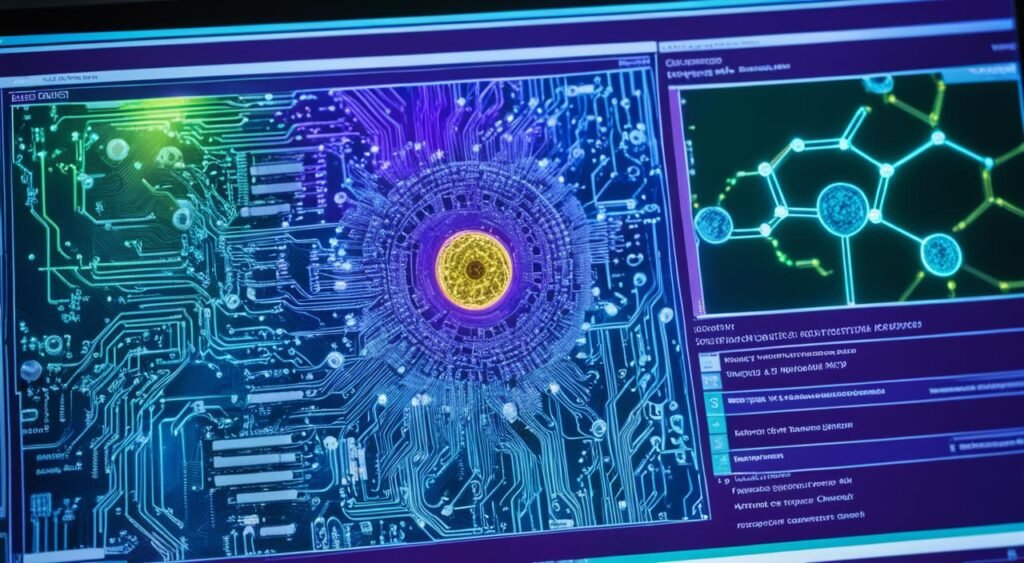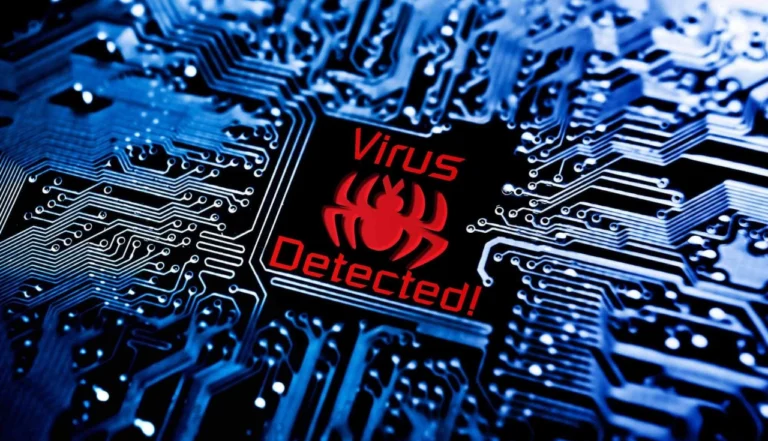3 Tricks to Speed Up Your Computer

Is your computer running slower than usual? Don’t worry, we’ve got you covered with these simple tricks to speed up your computer.
Whether you’re using Windows 10, Windows 11, or a Mac, these tips will help improve performance and boost efficiency. Let’s dive in and get your computer running like new again!
Has your computer become frustratingly slow? It’s time to take action and give your machine a performance boost.
No matter if you’re dealing with a slow computer, computer slow, or simply want to speed up your computer, these tricks will help you reclaim that lost speed and get your computer back on track.
From uninstalling unnecessary software to cleaning up your disk, we’ll explore a range of effective strategies that can make a real difference in your computer’s performance.
Uninstall Unnecessary Software
One common culprit of a slow computer is unnecessary software or bloatware. Many new computers come preloaded with programs you don’t need or use. Take some time to uninstall any unwanted apps or programs from your computer.
On Windows, you can do this by right-clicking on the app icon in the Start menu or going to Programs and Features in the Control Panel. On a Mac, you can uninstall apps by dragging them to the Trash.
By removing these unnecessary programs, you’ll free up valuable disk space and improve your computer’s performance.
Why Uninstalling Unnecessary Software is Important
Uninstalling unnecessary software is crucial to optimize your computer’s performance. By removing unwanted apps or programs, you’ll not only declutter your system, but also free up valuable disk space and improve overall efficiency. These programs can consume memory and processing power, causing your computer to run slower than it should.
Tutorial: How to Uninstall Programs on Windows
If you’re using a Windows computer, follow these simple steps to uninstall unwanted programs:
- Click on the Start menu and type “Control Panel” in the search bar.
- Open the Control Panel and navigate to the “Programs” or “Programs and Features” section.
- Look for the program you want to uninstall and select it.
- Click on the “Uninstall” or “Remove” button.
- Follow the on-screen instructions to complete the uninstallation process.
Tutorial: How to Remove Unwanted Apps on Mac
If you’re using a Mac, follow these steps to remove unwanted apps:
- Open the Finder.
- Navigate to the “Applications” folder.
- Find the app you want to uninstall.
- Click and drag the app to the Trash.
- Empty the Trash to permanently remove the app from your computer.
By regularly uninstalling unnecessary software, you’ll keep your computer running smoothly and efficiently.
Limit Startup Programs
When you start your computer, many programs automatically launch in the background, which can slow down the boot time. By limiting the number of programs that start at startup, you can improve your computer’s performance.
On Windows, you can use the Task Manager to manage startup programs. Simply press Ctrl+Shift+Esc to open the Task Manager, go to the Startup tab, and disable any unnecessary programs.
Did you know? By disabling startup programs, you can reduce the load on your computer’s resources and speed up the startup process.
On a Mac, you can manage startup programs in the System Preferences under Users & Groups.
| Operating System | Steps to Manage Startup Programs |
|---|---|
| Windows |
|
| Mac |
|
By disabling these programs, you’ll reduce the load on your computer’s resources and speed up the startup process. This can significantly improve your overall computing experience.

Benefits of Limiting Startup Programs
- Improved Boot Time: With fewer programs running at startup, your computer will boot up faster, allowing you to start working or gaming without delays.
- Enhanced Performance: By reducing the load on your computer’s resources, you’ll have more processing power available for the tasks you need to accomplish.
- Efficient Resource Allocation: Disabling unnecessary startup programs helps optimize resource allocation, ensuring that your computer allocates its resources effectively for improved performance.
Take control of your startup programs to enhance your computer’s performance and achieve a faster, smoother computing experience.
Clean Up Your Disk
Over time, your computer’s hard drive can accumulate a significant amount of clutter in the form of temporary files, old downloads, and other unnecessary files. This accumulation can not only take up valuable disk space but also slow down your computer’s performance.
By performing a disk cleanup, you can effectively eliminate these unwanted files and free up disk space, allowing your computer to operate more efficiently and improving its overall speed.
To perform a disk cleanup on Windows, you can use the built-in Disk Cleanup tool. Simply search for “Disk Cleanup” in the search bar and select the tool from the results. The Disk Cleanup tool will scan your computer and identify files that can be safely deleted. This includes temporary files, recycle bin contents, and system files that are no longer needed.
If you’re using a Mac, you can achieve similar results by using the “About This Mac” dialog box. Click on the Apple menu in the top-left corner of your screen, select “About This Mac,” and click on the “Storage” tab. From there, you can click on the “Manage” button to access options for optimizing your storage and removing unnecessary files.
It’s important to note that before deleting any files, you should review the list of items to be deleted and ensure that you’re not removing anything important or valuable. Once you’re confident in the items selected, you can proceed with the cleanup process.
“Performing a disk cleanup is an essential step in maintaining the performance of your computer. By regularly removing unnecessary files, you can create more space on your hard drive and optimize your computer’s speed and efficiency.” – Tech Expert
Additionally, if you find that certain files or folders are taking up a significant amount of space on your disk but you’re not ready to delete them permanently, you can consider moving them to an external storage device or cloud storage. This way, you can still access these files when needed, without cluttering your computer’s hard drive.
Remember, regular disk cleanups should be part of your computer maintenance routine, ensuring that your computer runs smoothly and efficiently. By freeing up disk space and removing unnecessary files, you can enjoy a faster and more responsive computing experience.
| Benefits of Disk Cleanup | How to Perform a Disk Cleanup |
|---|---|
| 1. Frees up disk space | 1. Search for “Disk Cleanup” in the Windows search bar |
| 2. Improves computer performance | 2. Select the Disk Cleanup tool from the results |
| 3. Reduces clutter | 3. Review the list of files to be deleted |
| 4. Optimizes storage capacity | 4. Proceed with the cleanup process |
Add More RAM
Insufficient RAM can significantly impact your computer’s speed, especially when running multiple programs simultaneously. To upgrade your computer’s memory capacity and improve multitasking capabilities, consider adding more RAM.
Start by checking your computer’s specifications to determine the type and amount of RAM it supports. This information is usually available in your computer’s user manual or on the manufacturer’s website. Once you have the necessary details, you can purchase compatible RAM modules from reputable manufacturers like Crucial, Kingston, and Corsair.
Adding more RAM will allow your computer to handle more tasks at once, resulting in improved performance and faster processing speed. With increased memory, you can run resource-intensive applications, edit large files, and multitask without experiencing lag or slowdowns.
The Benefits of Upgrading RAM
Upgrading your RAM offers several benefits:
- Improved Multitasking: With more RAM, you can switch between applications seamlessly and run multiple programs simultaneously without performance issues.
- Faster Program Load Times: Increased memory capacity means faster loading times for applications and files, allowing you to work more efficiently.
- Better Gaming Performance: Games often require a substantial amount of RAM to run smoothly. Upgrading your RAM can enhance your gaming experience by providing the necessary resources for high-quality graphics and seamless gameplay.
- Enhanced Photo and Video Editing: RAM is essential for processing large files in programs like Photoshop or Premiere Pro. More RAM allows for smoother editing and faster render times.
Whether you’re a professional who relies on demanding software or a casual user who wants a smoother computing experience, upgrading your RAM is a worthwhile investment. It’s a relatively simple and cost-effective way to improve your computer’s performance and ensure it meets the demands of modern applications.
Is Adding RAM Right for You?
If you’re experiencing frequent slowdowns, lag, or have difficulty running multiple programs simultaneously, upgrading your RAM can provide a significant performance boost. However, it’s important to consider your specific needs and usage patterns.
If you primarily use your computer for basic tasks like web browsing, document editing, or streaming videos, you may not see a significant improvement in performance by adding more RAM. In such cases, optimizing your existing software and performing regular maintenance can often resolve any speed issues.
However, if you frequently work with resource-intensive applications, perform data-intensive tasks, or are an avid gamer, upgrading your RAM can make a noticeable difference in speed and multitasking capabilities.
It’s also worth noting that adding RAM alone may not solve all performance issues. Other factors such as the processor, storage drive, and overall system configuration also play a role in determining your computer’s speed. If you’re unsure about whether to upgrade your RAM or need assistance with assessing your computer’s performance, consider consulting with a computer technician or an experienced IT professional.
By upgrading your RAM, you can unlock your computer’s full potential and enjoy a faster, more efficient computing experience. So, if you’re looking to increase memory, improve multitasking, and boost overall performance, adding more RAM should be on your list of considerations.
Lorem ipsum dolor sit amet, consectetur adipiscing elit. Vestibulum fermentum dui id mauris aliquam, id placerat elit maximus. Duis nec tellus erat. Phasellus fermentum sapien ac lobortis ornare. Vivamus sapien ligula, pellentesque eget dolor malesuada, commodo luctus tortor. Praesent arcu urna, feugiat eget urna non, pretium consequat mi. Proin nisl justo, pellentesque ut convallis nec, lacinia non augue. Vestibulum rutrum turpis sit amet dapibus malesuada. Curabitur nec viverra neque. In ut tincidunt velit. Vestibulum et pharetra diam. Duis facilisis facilisis arcu ut venenatis. Vivamus id pulvinar nunc, sed blandit leo. Pellentesque felis neque, condimentum sed massa nec, fringilla egestas mi.
Install an SSD Startup Drive
Is your computer taking forever to start up? Upgrade your hard drive to a solid-state drive (SSD) for a faster startup and improved overall performance. SSDs offer quicker data access and transfer speeds compared to traditional hard drives, making them ideal for enhancing your computing experience. By installing an SSD as your startup drive, you’ll enjoy faster boot times and a more responsive system.
Adding an SSD to your computer is a game-changer. Whether you’re using a laptop or a desktop, this upgrade can make a significant difference in speed and responsiveness. If your computer supports it, consider replacing your existing hard drive with an SSD or adding an external SSD for additional storage capacity.
Not only will your computer start up quicker, but you’ll also experience improved data access and transfer speeds. SSDs eliminate the mechanical components found in traditional hard drives, which means faster read and write times, resulting in a more efficient workflow and seamless multitasking capabilities.
Don’t let a slow startup hinder your productivity. Upgrade to an SSD and enjoy a faster and more responsive computer.
Run a Malware Scan
Malware and viruses can severely affect your computer’s performance and compromise its security. Protecting your computer from these threats is crucial for optimizing speed and ensuring a secure computing environment. By running a thorough malware scan using reliable antivirus software, you can identify and remove any malicious programs that may be affecting your system.
Windows users have the option to use Windows Defender, the built-in antivirus program, or choose from various reputable third-party antivirus software solutions. For Mac users, the operating system offers built-in security features such as XProtect and MRT. It is recommended to regularly update your antivirus software to ensure it has the latest virus definitions and security patches.
Perform full system scans with your antivirus software on a regular basis. This comprehensive scanning process will detect and remove any malware that may have infiltrated your computer. It is important to follow the recommended scanning schedule provided by your antivirus software provider to maintain optimal protection.
By keeping your computer free from malware, you not only enhance its performance but also maintain a safe and secure environment for your personal and sensitive data.

Benefits of Running a Malware Scan:
- Secures your computer from malicious programs
- Optimizes your computer’s performance
- Protects your data from theft or compromise
- Maintains a safe and secure computing environment
| Antivirus Software | Supported Platforms | Key Features |
|---|---|---|
| Windows Defender | Windows |
|
| Norton | Windows, Mac, Android, iOS |
|
| Avast | Windows, Mac, Android |
|
Running regular malware scans with reliable antivirus software is an essential part of maintaining a high-performing and secure computer. Invest in a reputable antivirus solution and follow recommended scanning practices to protect your computer from malware, optimize its speed, and ensure a safe computing experience.
Conclusion
Congratulations! You now have the knowledge and tools to improve the speed and performance of your computer. By following these proven tips and tricks, you can optimize your machine and enjoy a faster, more efficient computing experience.
To start, uninstall unnecessary software that is taking up valuable space and slowing down your computer. Next, limit startup programs to reduce the load on your system during boot-up. Additionally, clean up your disk by removing temporary files and freeing up disk space.
If you want to take your computer’s performance to the next level, consider adding more RAM to improve multitasking capabilities. Another great upgrade is installing an SSD startup drive for faster boot times and improved data access.
And, of course, don’t forget the importance of running regular malware scans to keep your computer protected and running smoothly. Finally, always keep your operating system up to date to ensure optimal performance and security.
By implementing these computer performance tips, you can say goodbye to a sluggish computer and hello to a faster, more efficient workflow. Take action today and enjoy the benefits of an optimized computer experience. Your productivity will thank you!
FAQ
How can I speed up my slow computer?
There are several tricks you can try to speed up your slow computer. You can uninstall unnecessary software, limit startup programs, clean up your disk, add more RAM, install an SSD, run regular malware scans, and keep your operating system up to date. These steps will help improve your computer’s performance and make it run faster.
How do I uninstall unnecessary software?
To uninstall unnecessary software, go to the Start menu on Windows or the Applications folder on Mac. Right-click on the app or program you want to remove and select “Uninstall” or drag the app to the Trash on Mac. This will free up disk space and improve your computer’s performance.
How can I limit startup programs?
To limit startup programs on Windows, open the Task Manager by pressing Ctrl+Shift+Esc. Go to the Startup tab and disable any unnecessary programs. On a Mac, go to System Preferences, then Users & Groups, and manage startup programs there. By reducing the number of programs that start at startup, you can improve your computer’s boot time and overall performance.
How do I clean up my disk?
On Windows, you can use the built-in Disk Cleanup tool. Go to the Start menu, search for “Disk Cleanup,” and open the tool. It will scan your computer and identify files that can be safely deleted to free up disk space. On a Mac, you can use the “About This Mac” dialog box to remove unnecessary files. By cleaning up your disk, you’ll create more space and improve your computer’s performance.
Can adding more RAM improve my computer’s speed?
Yes, adding more RAM can significantly improve your computer’s speed. Insufficient RAM can slow down your computer, especially when running multiple programs simultaneously. Check your computer’s specifications to determine the type and amount of RAM it supports, and consider upgrading to increase memory capacity.
How does installing an SSD improve computer performance?
Installing an SSD (solid-state drive) as your startup drive can greatly improve your computer’s performance. SSDs offer faster data access and transfer speeds compared to traditional hard drives. By replacing your existing hard drive with an SSD or adding an external SSD, you’ll experience faster boot times and improved overall speed.
How do I run a malware scan on my computer?
To run a malware scan, use reputable antivirus software. On Windows, you can use Windows Defender or third-party antivirus programs. Mac users can rely on built-in security features like XProtect and MRT. Regularly update your antivirus software and perform full system scans to detect and remove any malicious programs. By keeping your computer free from malware, you’ll ensure optimal performance and maintain a secure computing environment.
What are the benefits of optimizing computer performance?
Optimizing your computer’s performance can result in a faster and more efficient computing experience. It allows you to work and navigate through your files and programs with ease. By following the recommended tricks, you can speed up your computer, improve multitasking capabilities, and ensure a smooth and responsive user experience.
“Explore more captivating tech articles on Tech By TeHub! Dive deeper into the world of technology and stay informed.”






